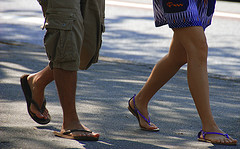2.1. The invisible bubble
Para saber más
Watch the following video:
Pregunta Verdadero-Falso
Retroalimentación
Verdadero
The interviewer talks about a medium size space.
Retroalimentación
Falso
The expert suggests sharing it.
Retroalimentación
Verdadero
The man in the video says " Kids are a good excuse"
Retroalimentación
Verdadero
By doing this, they will probably understand what you mean
Retroalimentación
Falso
if you are at the cashier, it is a good idea to stretch over to reach for a magazine so that this person has to back away from you.
Curiosidad
When two people are talking to each other, they tend to stand a specific distance apart. Each person has an invisible boundary around their body into which other people may not come. If someone pierces this boundary, they will feel uncomfortable and move away to increase the distance between them. (The major exception is family members and other loved ones.) This personal distance is not due to body odor or bad breath, but because closeness lends a sense of intimacy that is at odds with their relationship to the other individual.
Interestingly, the average personal distance varies from culture to culture. Americans tend to require more personal space than in other cultures. So if you try to get too close to an American during your conversation, he or she will feel that you are "in their face" and will try to back away. Try to be aware of this, so if the person to whom you are speaking backs away a little, don't try to close the gap.
Also, try to avoid physical contact while you are speaking, since this may also lead to discomfort. Touching is a bit too intimate for casual acquaintances. So don't put your arm around their shoulder, touch their face, or hold their hand. Shaking hands when you initially meet or part is acceptable, but this is only momentary.
Source: http://www.edupass.org/culture/personalspace.phtml
